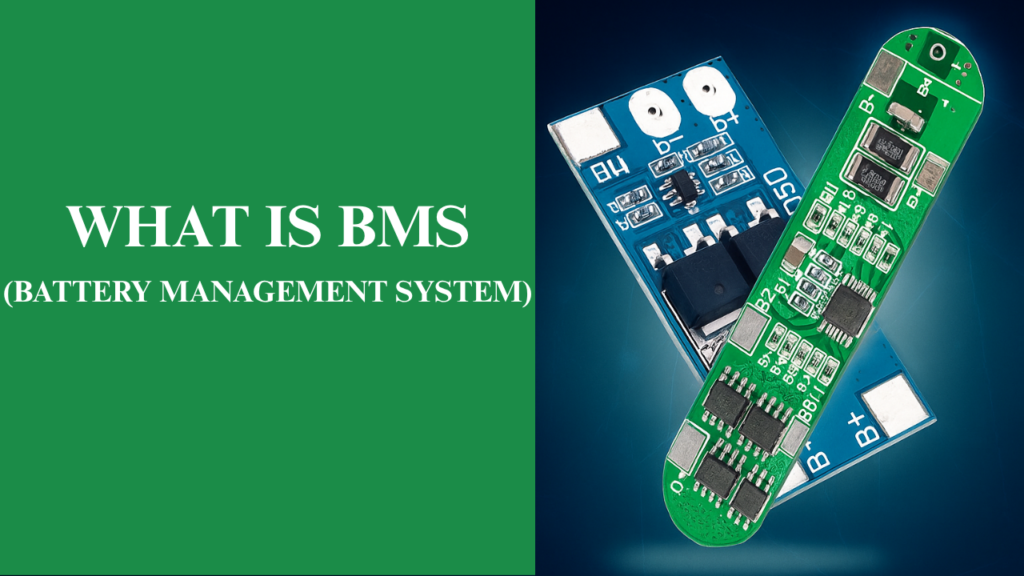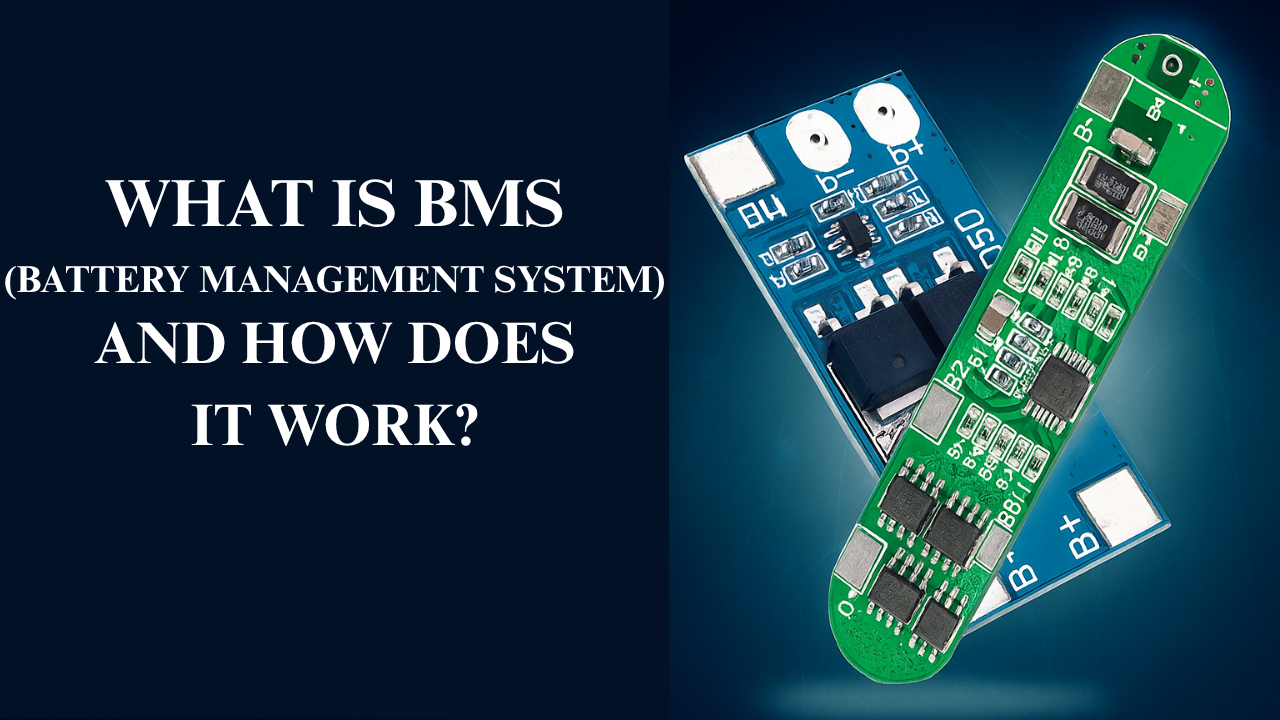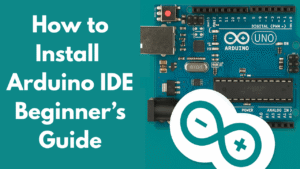Batteries power our modern world — from electric vehicles and solar grids to laptops and smart gadgets in your pocket. But what keeps these batteries safe, efficient, and long-lasting? Operating silently, the Battery Management System (BMS) safeguards your battery’s health and ensures reliable performance.
If you’ve ever wondered what makes a BMS so essential or how it actually works, buckle up — you’re about to find out.
🔋 What is a Battery Management System (BMS)?

A Battery Management System, or BMS, serves as the intelligent control hub for rechargeable battery packs, overseeing their operation, safety, and performance in real-time. Think of it as the brain and bodyguard of your battery — continuously monitoring parameters like voltage, current, and temperature to keep everything running smoothly.
Without a BMS, even the best lithium-ion battery pack is a ticking time bomb. From electric bikes to drones to electric cars, every reliable battery setup relies on a BMS for protection, efficiency, and longevity.
⚙️ Why Do You Need a BMS?
Batteries aren’t as simple as plugging in and powering up. They need careful handling and precise limits to function safely. A BMS handles that for you by:
✅ Preventing overcharging and deep discharging
✅ Balancing the charge across battery cells
✅ Monitoring battery health in real-time
✅ Protecting against overheating, short circuits, and overcurrent situations
In short, it turns a risky chemical powerhouse into a safe, smart, and efficient energy source.
🧩 Anatomy of a BMS: Key Components
Let’s break down the primary building blocks that make a BMS tick:
1️⃣ Cut-off MOSFETs
They function as regulators, managing the current flow throughout the charging and discharging processes. If something goes wrong — say, a voltage spike — they cut the connection in an instant.
2️⃣ Fuel Gauge Monitor
Just like the fuel gauge in your car, this tracks how much charge is coming in and going out, keeping tabs on the battery’s remaining capacity.
3️⃣ Cell Voltage Monitor
Each cell in a battery pack needs to stay within safe voltage limits. This block ensures no individual cell gets too high or drops too low.
4️⃣ Temperature Sensors
Batteries can overheat quickly, especially under heavy loads. Temperature sensors constantly scan for heat spikes and trigger protection measures when necessary.
5️⃣ Additional Features
- Battery Authentication — verifies the battery pack is genuine
- Real-Time Clock (RTC) — tracks operational data logs
- Memory Storage — records system events for diagnostics
- Daisy Chain Connections — links multiple BMS units together in large systems
⚡ How Does a BMS Work?
At its core, a BMS monitors voltage, current, and temperature in real-time using sensors and microcontrollers. Based on the readings:
- If a charger is connected, the charging MOSFET switches on, allowing power in.
- If a device is connected, the discharging MOSFET switches on, delivering power out.
- If a parameter crosses its safety threshold (like overvoltage, overcurrent, or overheating), the BMS swiftly disconnects the battery pack to prevent damage.
Modern BMS systems also manage cell balancing — making sure each cell in a multi-cell pack charges and discharges evenly. This happens in two ways:
- Passive Balancing — discharges excess energy through resistors
- Active Balancing — transfers energy from fuller cells to emptier ones using capacitors or inductors
🛡️ Functions & Advantages of a BMS
Why is a BMS indispensable? Here’s what it brings to the table:
🔸 Prioritizes safety: by protecting against overcharging, excessive discharge, short-circuiting, and overheating risks.
🔸 Enhanced Performance: Keeps batteries operating at optimal ranges for voltage, current, and temperature
🔸 Extended Battery Life: By avoiding stress and imbalance, the battery lifespan gets a significant boost
🔸 Smart Diagnostics: Tracks health, charge cycles, and predicts battery aging
🔸 Modern Connectivity: Many BMS systems today offer Bluetooth, UART, or CAN bus connectivity for remote monitoring
🔥 Recommended BMS Boards You Should Know
Looking to pick up a BMS for your next DIY project or EV setup? Here are a couple of reliable options you can order now:
- ✅ The TP4056 1A Li-ion Battery Module (Micro USB) — offers an efficient and streamlined solution for charging and protecting single lithium-ion cells.
An ideal choice for safely charging single-cell Li-ion batteries. Includes overcharge, over-discharge, and short-circuit protection with automatic cut-off when fully charged. - ✅ 3S 20A 18650 Lithium Battery Protection Board (12.6V) — Designed for 3-cell 18650 packs, this board handles higher currents with built-in protections for overcharge, over-discharge, and balancing functions.
🛒 Explore more at ElectricalBro.in — your go-to hub for robotics, DIY, and electronic projects.
📊 Final Thoughts
The Battery Management System isn’t just a tech add-on — it’s an absolute necessity for any rechargeable battery pack. As battery tech advances, the role of BMS grows even more crucial in ensuring your devices stay safe, smart, and long-lasting.
So whether you’re building a custom power bank, electric scooter, or a solar energy storage system, investing in the right BMS is non-negotiable. And now, you’re just a click away from getting yours!
Check out the full range of BMS modules and battery protection solutions at ElectricalBro.in ⚡
🎥 Follow & Learn More
Subscribe to our YouTube channel for hands-on projects, coding tutorials, and hardware experiments. Stay creative and keep building!



